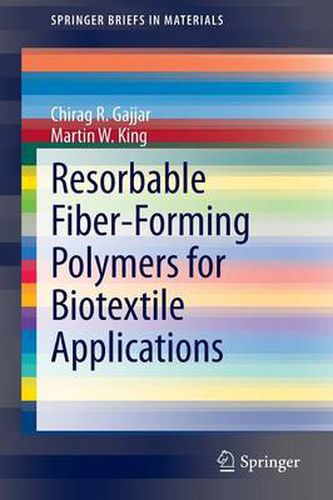Readings Newsletter
Become a Readings Member to make your shopping experience even easier.
Sign in or sign up for free!
You’re not far away from qualifying for FREE standard shipping within Australia
You’ve qualified for FREE standard shipping within Australia
The cart is loading…






This title is printed to order. This book may have been self-published. If so, we cannot guarantee the quality of the content. In the main most books will have gone through the editing process however some may not. We therefore suggest that you be aware of this before ordering this book. If in doubt check either the author or publisher’s details as we are unable to accept any returns unless they are faulty. Please contact us if you have any questions.
This book summarizes the properties and applications of conventional and commercially available fiber-forming, bioresorbable polymers, as well as those currently under study, for use as biotextiles. Factors affecting the performance of these biomaterials are presented, and precautionary measures to reduce premature, hydrolytic degradation during manufacturing and processing are discussed. Because of the structural requirements of medical devices and the technological advancements in synthetic fibers and textile technology, the new field of Biotextiles has evolved to exploit the potential of various woven, knitted, braided and non-woven textile structures for biomedical applications. Textile substrates provide certain unique mechanical properties to the medical device and because of an inherently high level of porosity, they can encourage cell growth and promote migration and proliferation. Bioresorbable devices that assist in the repair and regeneration of damaged tissues have in recent years replaced many of the permanent prosthetic devices. Thus, the topic of Bioresorbable Biomaterials generates much interest and research activity in the field of biomaterials science today. For this reason, the use of bioresorbable polymers as fibers is currently dominating the field of resorbable biomaterials for applications from sutures to tissue engineering scaffolds.
$9.00 standard shipping within Australia
FREE standard shipping within Australia for orders over $100.00
Express & International shipping calculated at checkout
This title is printed to order. This book may have been self-published. If so, we cannot guarantee the quality of the content. In the main most books will have gone through the editing process however some may not. We therefore suggest that you be aware of this before ordering this book. If in doubt check either the author or publisher’s details as we are unable to accept any returns unless they are faulty. Please contact us if you have any questions.
This book summarizes the properties and applications of conventional and commercially available fiber-forming, bioresorbable polymers, as well as those currently under study, for use as biotextiles. Factors affecting the performance of these biomaterials are presented, and precautionary measures to reduce premature, hydrolytic degradation during manufacturing and processing are discussed. Because of the structural requirements of medical devices and the technological advancements in synthetic fibers and textile technology, the new field of Biotextiles has evolved to exploit the potential of various woven, knitted, braided and non-woven textile structures for biomedical applications. Textile substrates provide certain unique mechanical properties to the medical device and because of an inherently high level of porosity, they can encourage cell growth and promote migration and proliferation. Bioresorbable devices that assist in the repair and regeneration of damaged tissues have in recent years replaced many of the permanent prosthetic devices. Thus, the topic of Bioresorbable Biomaterials generates much interest and research activity in the field of biomaterials science today. For this reason, the use of bioresorbable polymers as fibers is currently dominating the field of resorbable biomaterials for applications from sutures to tissue engineering scaffolds.